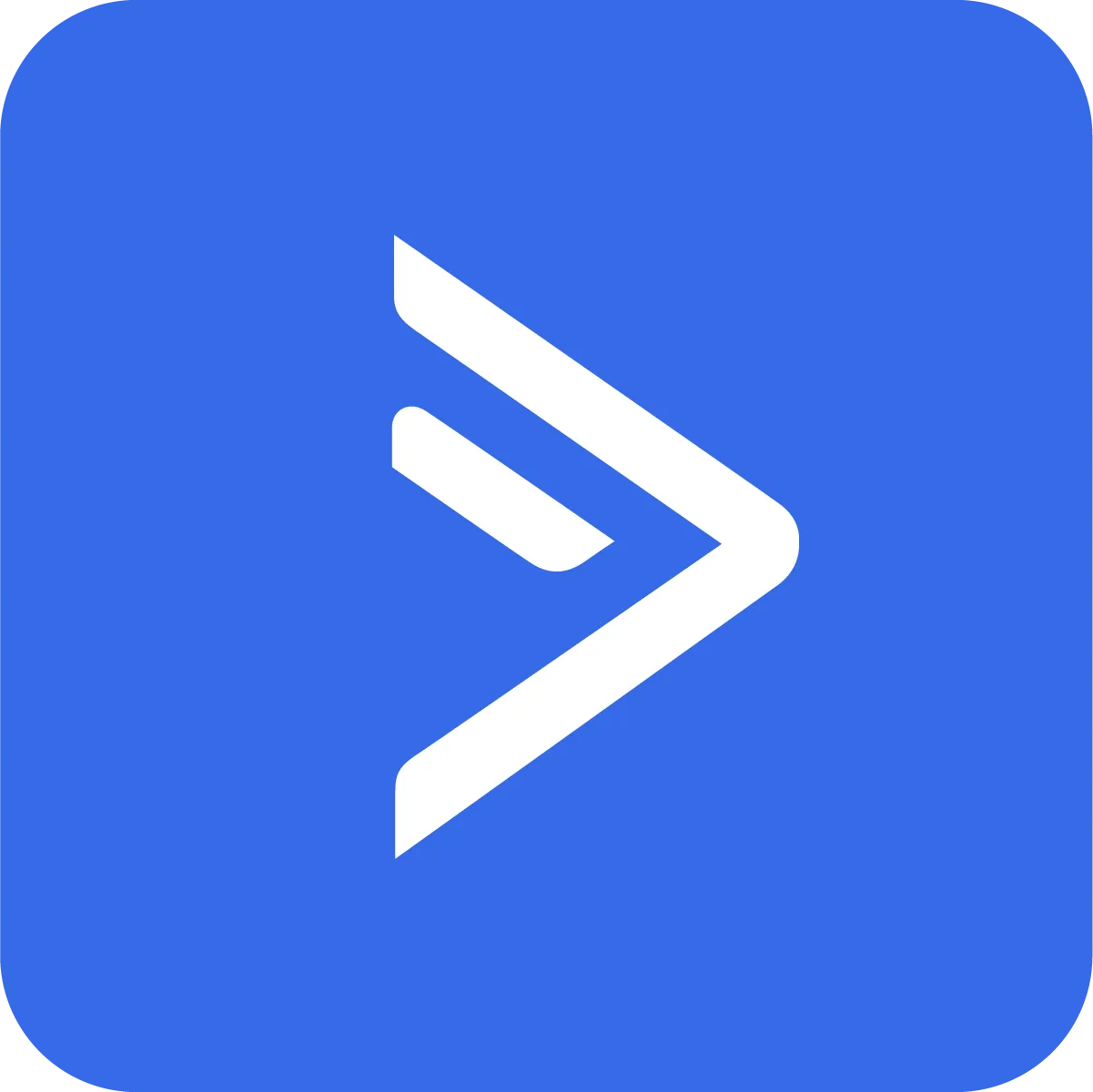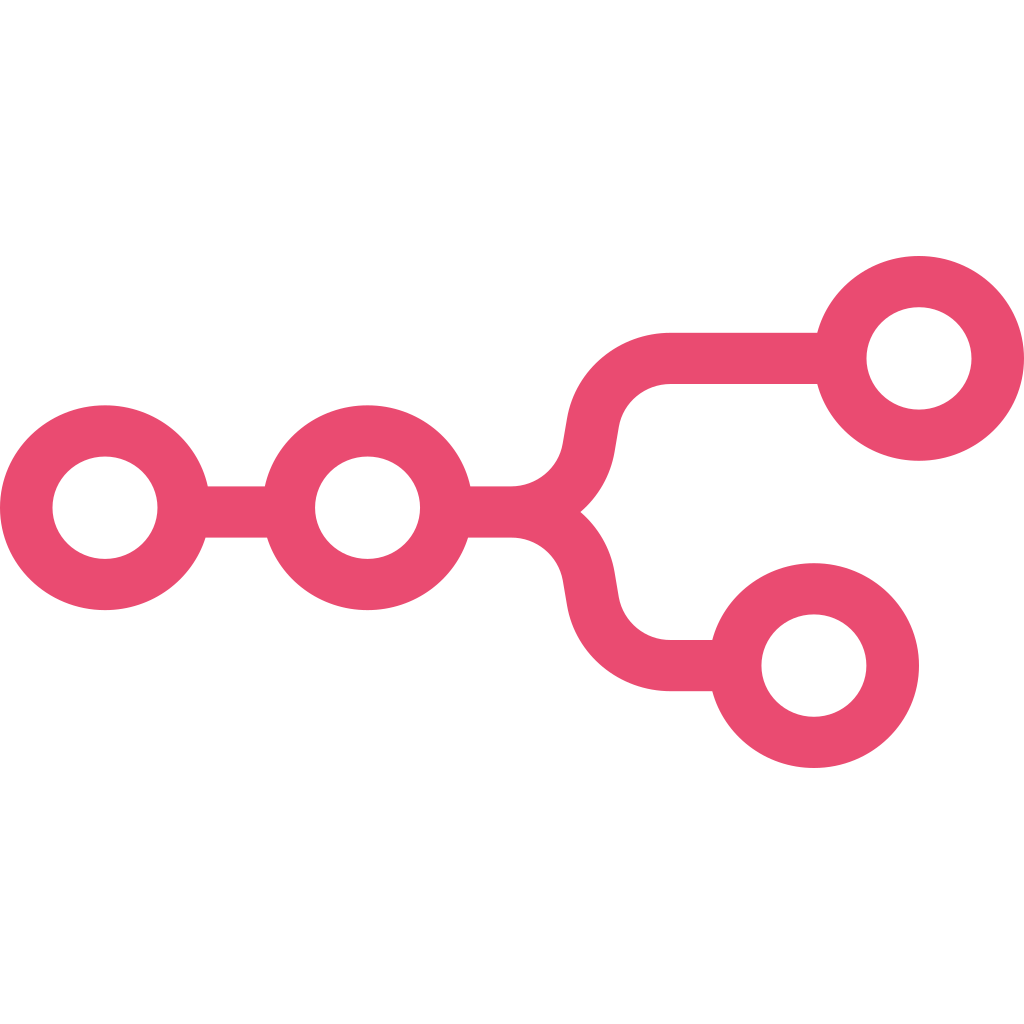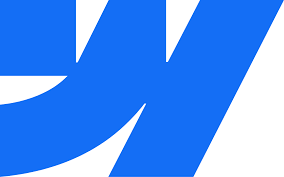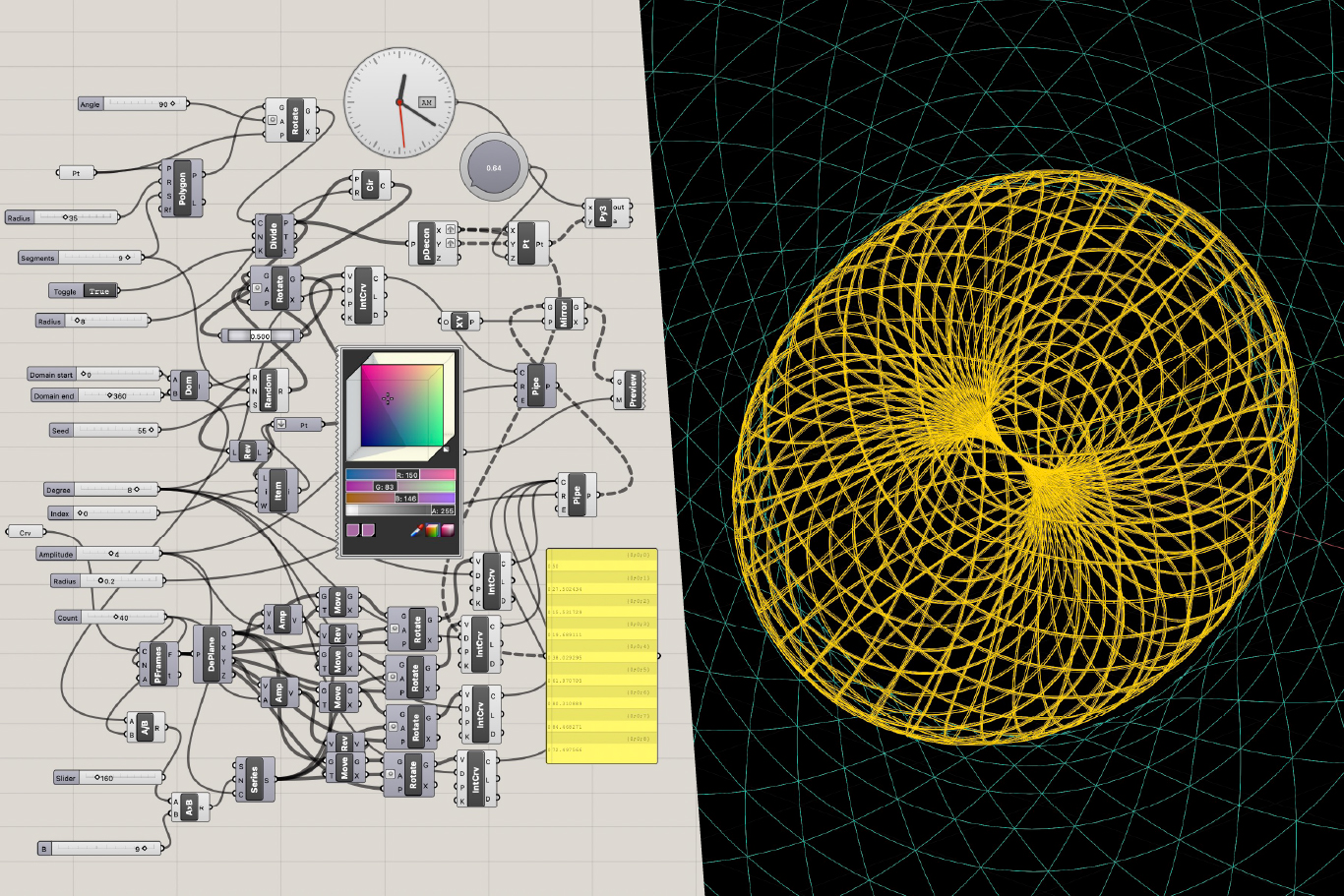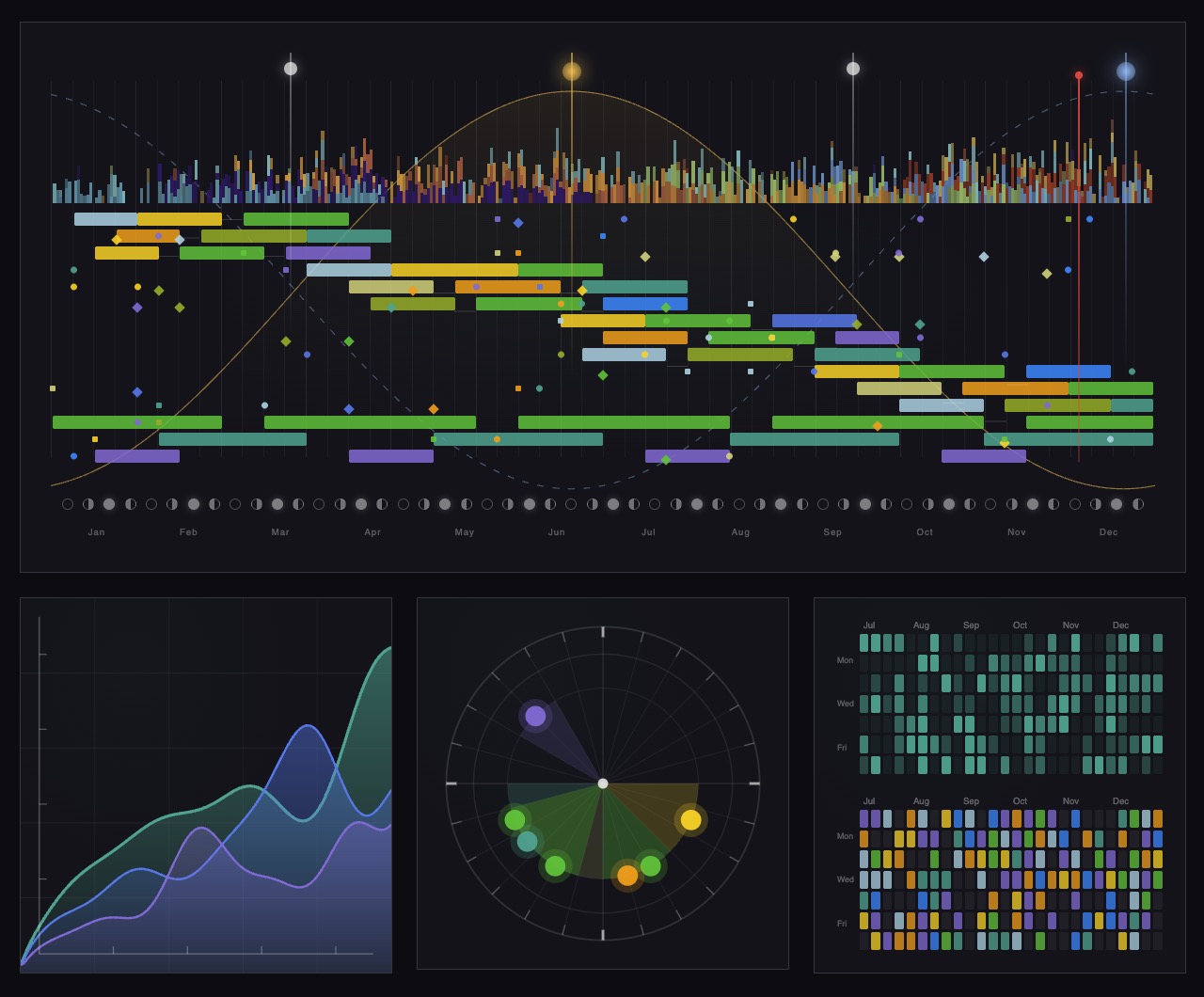People


Banner

Links & Files
Summary
Overview:
Compass Framework Refresh: Team agreed to create a visually redesigned primer for the updated Compass framework targeting 12th graders in a relational skills pathway pilot launching within two weeks.
Quick-Turnaround Deliverable: James will produce a polished InDesign template with improved layout, paragraph styles, and initial iconography within days to replace the existing plain Google Doc version for student distribution by early next week.
Visual Communication Challenge: Core design challenge involves distilling complex concepts like relational fluency and the three co-inhabited worlds (inner, inter, outer) into simple, engaging graphics that resonate with youth while maintaining brand continuity.
Strategic Branding Evolution: Short-term primer refresh serves as test ground for potential larger rebranding initiative later this year, pending fundraising and pilot success, balancing innovation with respect for 10-year-old framework trusted by thousands.
Expanded Framework Scope: Updated Compass moves beyond individual development to emphasize relational capacities, ecological awareness, and outer world impact, introducing relational fluency concept across nested competency dimensions.
Design Partnership Alignment: James's expertise in relational, intersubjective visual communication and diagram design aligns perfectly with project needs, with broader network available for future branding expansion.
Notes:
🎯 Project Context & Strategic Rationale (01:47 - 07:33) Daren runs three schools in Nashville (two middle schools and one high school) founded 11 years ago, all centered around the Compass framework for comprehensive human development. The framework uses a directional metaphor with five dimensions: True North, Sharp Mind, Big Heart, Noble Purpose, and Aligned Actions, mapped to compass directions. Thousands in the community have used this framework for over 10 years through circle practices, badge systems, and training programs now offered to other schools. Current update expands scope from individual development to include relational capacities and outer world impact, making framework more holistic while preserving core metaphor's integrity. Maintaining brand continuity critical given framework's established trust and adoption across broad user base. Updated version specifically supports new 12th-grade relational skills pathway pilot including peer counseling apprenticeships launching in two weeks.
📐 Visual Design Strategy & Iconography (09:40 - 24:29) James proposed creating simple icons and visual cues for core Compass concepts to help students quickly grasp and remember dimensions and competencies. Shared examples of icon-based card sets and domain models from similar projects demonstrating effective approaches to visualizing abstract relational concepts. Plan includes using geometric shapes and colors to generate first draft icons and diagrams for rapid iteration by next week's deadline. Nature-themed soft imagery will complement geometric elements to emphasize ecological interconnectedness central to updated framework philosophy. Initial primer will likely use placeholder icons and stock photos to meet tight timeline, with refinement planned for subsequent phases as project evolves. James referenced previous work creating visual systems for relational and intersubjective concepts, showing natural alignment with project needs. Specific concept discussed: three-layered image representing inner, inter, and outer worlds with shifting visual emphasis to show how attention moves across these domains, making the abstract tangible.
📄 Implementation Approach & Technical Workflow (24:31 - 28:21) James will build InDesign template allowing easy text updates and expansion throughout the year as framework continues evolving. Template will include paragraph styles, character styles, page layouts, and numbered sections with space for illustrations and icons. This approach balances professional polish with practical functionality for ongoing content updates. Google Docs considered as faster alternative but deprioritized due to limited design flexibility and need for professional-quality PDF deliverable for student distribution. James committed to balancing template design work with initial iconography development, painting with "broader brush" to avoid over-investing time in details during this rapid first phase. Template structure supports scalability, allowing duplication and evolution as new content and branding elements develop over time. Daren emphasized desire to preserve initial design investment as foundation for year-long content expansion and updates.
🎨 Conceptual Communication Challenges (09:28 - 18:19) Key creative challenge involves distilling relational fluency and developmental competencies into visuals that resonate with 12th graders while maintaining theoretical depth. Current competency lists are text-dense, creating opportunity for graphics to simplify understanding and boost engagement. Discussed creating nested competencies taxonomy visualization showing how different skills activate across inner, inter, and outer world domains. Three co-inhabited worlds concept requires visual treatment showing same reality experienced through three different lenses or modes of attention. James's experience with "we space" concepts and mutuality themes positions him well for this challenge, as acknowledged by Robin, Lauren, and Daren. Soft, interconnected graphic style will support ecological worldview and emphasize entanglement across individual, relational, and environmental dimensions. Visual strategy aims to make complex developmental theory accessible and memorable for teenage audience without oversimplifying core concepts.
⏱️ Timeline & Resource Coordination (05:03 - 29:47) Extremely tight timeline requires delivery of initial redesigned primer by early next week to support pilot launch in two weeks. James committed to dedicating focused hours this week to produce first draft balancing template creation and icon design within compressed timeframe. Daren will coordinate internally with Lauren and Rob for content review and feedback throughout week, ensuring alignment with educational goals. Communication will happen primarily via WhatsApp for rapid response, with email as backup channel. Team expects minimal iteration given timeline constraints and trust in James's expertise with similar projects. Budget not yet formalized; Daren will pursue fundraising to cover current work and potential future branding expansion. Short-term primer project scoped as small engagement with possibility of scaling into comprehensive rebranding effort depending on pilot success and resource availability later in year.
🌱 Brand Evolution & Future Vision (06:28 - 09:28) Longer-term vision includes broader rebranding of Compass framework for community-wide rollout within the year, pending fundraising approval and pilot validation. Current primer serves as test ground shaping eventual full branding project that may involve other vendors and deeper creative development. Need to balance innovation with continuity emphasized given thousands of existing users who value core compass metaphor and have integrated it into practice over decade. James noted Iris Cocreative's network capacity for expanded branding, web design, and print materials beyond this initial phase, positioning firm for potential ongoing partnership. Daren mentioned existing relationships with other branding professionals who may be involved in larger project, suggesting collaborative ecosystem approach. Updated framework's emphasis on relational capacities and ecological awareness represents philosophical evolution requiring visual language that honors past while signaling growth. This strategic positioning aims to differentiate Compass in educational development market while maintaining authentic connection to established community values.
Action Items
James Redenbaugh
- Create professional InDesign template with paragraph styles, page layouts, and space for illustrations to format primer document for polished PDF delivery
- Develop initial graphic concepts and simple icons representing Compass framework's five dimensions and competency categories, focusing on relational and intersubjective themes
- Design visual representation of "three co-inhabited worlds" concept showing inner, inter, and outer worlds with distinct visual treatments or lighting to convey attention shifts
- Balance template design work with iconography development to deliver complete polished PDF by early next week for 12th-grade pilot distribution
- Share draft designs and layouts via WhatsApp throughout week for rapid feedback and minor iterations as needed
- Incorporate nature-themed soft imagery alongside geometric icons to emphasize ecological interconnectedness themes
Daren Dickson
- Provide existing Compass branded assets and related framework documents to James for alignment and visual reference
- Coordinate with Robin and Lauren throughout week to review drafts and provide content feedback ensuring educational alignment
- Communicate specific image preferences or visual ideas via document comments or direct WhatsApp messages to guide design choices
- Pursue fundraising or budget allocation to cover current design services and potential future branding expansion work
- Clarify any content questions James raises about framework concepts, competencies, or intended messaging during design process
Initiatives
Compass Framework Primer
Start Date:
October 20, 2025
Priority:
High
Size:
Status:
Start Creation
Team:
Meeting Transcript
00:00:01
James Redenbaugh: Here I am. Good to see you.
00:00:03
Daren Dickson: Nice to see you, too. I have a little recorder, too. Is that okay?
00:00:10
James Redenbaugh: Yeah, no problem.
00:00:11
Daren Dickson: It's like the new world, I think. But you should always get consent.
00:00:16
James Redenbaugh: Yeah. Pretty soon we'll just have them meet and they'll handle everything.
00:00:20
Daren Dickson: Oh, yeah. That's a little scary, but probably true.
00:00:25
James Redenbaugh: Yeah, hopefully not. What were you saying?
00:00:29
Daren Dickson: I was trying to remember. You're in the Northeast. I couldn't remember exactly where you are in the world. I know Robin Lauren drove to your wedding. I think so. I know you're up there somewhere.
00:00:39
James Redenbaugh: Yeah, I'm in Philadelphia.
00:00:41
Daren Dickson: Oh, Philly. Okay. Nice. And congratulations. You guys still riding high?
00:00:49
James Redenbaugh: We are, yeah. We're very happy. Very busy getting me back into things and. And then I got taken out by a bad cold, but just starting. Yeah. Starting to feel better now.
00:01:02
Daren Dickson: It's no good when it takes your weekend away.
00:01:06
James Redenbaugh: Yeah, yeah, totally.
00:01:09
Daren Dickson: All right, Well, I appreciate you being willing to help on this. When I told Robin Lauren we're working on this project for Valor, but I was telling them, I was like, I just wanted to have a different feel than our original branding. And we all thought of you immediately as somebody who could see a different. Could probably interpret what we're trying to do in a way that would. That would work. So I'm excited to chat with you.
00:01:42
James Redenbaugh: Awesome. Yeah, happy to hear about it. What do you got in mind?
00:01:47
Daren Dickson: So I'm going to put the document back in the chat. I'm not sure if you had a chance to look at it. I'll just give you, like, a little update on this overall project. I think there's probably, like, very small to bigger versions of what we could do. All right, so there's a Google Doc in there now, so you probably remember this from the. From Hollyhock. But the, like, very basic overviews. We. I run some schools, two middle schools in the high school in Nashville that we started, like, 11 years ago. Now. One of the, like, key elements of our schools is what we call our compass framework. So there's kind of this compass metaphor, which is kind of a directional model. North, south, east, west, kind of. You'll see it's. But that's been kind of this primary developmental. We call it comprehensive human development model. And all the students and the adults are developing their inner compass. It's got five dimensions to it. True north, sharp mind, big heart, noble purpose, and aligned actions which kind of align to these directions. And we've used that for 10 years. We've built out the circle practice and these badges that all kind of align to this compass framework. And we now train other schools on that compass framework. The what we're doing working on this summer is we wanted to update it because we realized it's kind of focused a lot on the individual. But we want to branch it out to really focus on the relational capacities we need to develop and the kind of outer world impact that we want to have and kind of make this compass more just holistic I would say, and comprehensive like this metaphor. But we're pretty invested in the core metaphor. Like there's some elements of it that were pretty invested in both from a branch branding perspective, but also like we just believe and have. There's like thousands of people in our community who've been using it for many years now. So you have to be careful not to change it too much. And so that was the. We've been kind of embarking and I brought Rob and Lauren in to help over the last couple of months to do what we're just calling this updated Compass framework. So that's the long and short of it. And so we started. We have. There's probably like, there's much bigger documents that are behind what I just shared with you that are kind of going deeper into the foundational stuff. But this is what we're calling a primer and it's just as some of the like most basic ideas in it and we are using it specifically for some. We're doing a pilot with some of our 12th graders this year. We're calling into relational skills pathway where we're doing some workshops and they're going to do it peer counseling apprenticeship and we're trying to teach them some of these basic, these new basic updated ideas and that kicks off in a couple of weeks. And so for the pre reading we're. We can just give them this document which is totally fine probably. But in my mind I would love for it to be feel a little bit different to them than what they've seen in the past and to actually lay it out like the simplest thing you could do for us is just like lay it out into like a pretty canva or some PDF so just like add some graphics or photos and kind of lay it out in a kind of prettier newsletter style. That's I could probably figure out how to do that on my own because it's not that complicated. But that's like part one, part two is to really start to develop some alternate branding for this. And I think there's a couple places in it where Lauren and Robert, I thought like some creative kind of artistic. We, we just need to like, we want to kind of convey some kind of complex ideas in a simple way. And so that's where it's like your creative mind would be helpful. It's like, how could we show this so I can show you those couple of things? I think because we have like a short timeline for this. Like we're, we want to share it with the kids by early next week. And so it would be, it's like, would be like this week kind of project because I have no idea what your time is. Like, that's the short version. The longer version is as we roll this whole updated Compass framework out to our community at some point in the next year. I think we would like to kind of like rebrand it in some ways. And so there's like a whole kind of like some branding elements and somewhere like, which is probably like a bigger project of sorts, but this could just be like a little test ground for that. And if it feels like we have the momentum in the budget, probably to be honest, like, it would be a bigger kind of like rebranding project. We have some branding people that we've worked with. So I'd also have to kind of like talk to some other folks and just see where that bigger project might go. So that's what I had in my mind. I have no idea how you work, where your time availability is, what you're interested in, any of that. So I would love just to hear from your end, kind of like, does this fit? Would this be something you would do? Would you recommend somebody else? How could you help? Or would you be interested in any of that?
00:07:33
James Redenbaugh: Yeah, it all sounds interesting to me. IRIS stands for intuitive, relational and Intersubjective. So I love helping with anything to do with those domains and kind of diagrams are one of my specialties. You know, kind of communicating visually complex topics, especially things that have to do with relationality or we spaces or things like that. I just love to do myself and. But we have a whole network of people that we work with to do any kind of thing you need. We do a lot of a ton of branding, brand development, visual style creation. We also do, you know, our bread and butter is kind of website building and branding around that. But we also do a ton of print design, document design. I've done a ton of book design. So yeah, I mean really whatever you need. We're here for it.
00:08:50
Daren Dickson: Awesome. Well, that's exciting and it does sound, I mean the stuff we want to define which is I know why Robin Lauren connected me right with you or I was pretty sure. I knew you did some of this because I know you helped with their Triphora website and there's some. I, I got to participate in parts of that which are really cool. But this, we're definitely trying to convey some we space kind of mutuality components that are a little bit. Yeah, they can be tricky to. To convey. So maybe I should just jump into that. Do you have the document open now?
00:09:28
James Redenbaugh: Yeah, sure, yeah, I do.
00:09:30
Daren Dickson: Would that be helpful just to. Just to kind of talk through a couple of the places that seem like would be most helpful for some.
00:09:40
James Redenbaugh: Yeah.
00:09:40
Daren Dickson: Creativity. Okay, so if you just see at the beginning here the many worlds we inhabit. Well, I think to begin we do have some branded compass stuff that I can send your. Just so you have. Because I think it should like kind of match. But maybe I think we do want to do a little bit of an update because there's a couple parts we like go through our original compass and we probably would just use like the original Compass brand in there. But the first big idea is if you look in the table of contents, it says this many worlds we inhabit. And so if you just click down to there, it's a bookmark. And the basic framing that we're using is a way to kind of introduce kind of how to make sense of your experience to young people, which we think is intuitive, but is that you're like co inhabiting at least three worlds at any time that you can shift between your attention between your inner world to the outer world and then to what we call these inter worlds which are. We were going to call them relational worlds, but for reasons that we'll unpack in here, we decided we're calling the whole thing relational fluency, which is like tuning into the deep interconnectedness across all those worlds. And we didn't want relational fluency to get confused with just this relational world. And so we using interworld for the kind of in between worlds or the we space worlds. And so the kind of the pictures I've had in my mind, I tried to do something with like a, with the. One of the image generators because I like had this vision in my head. This is of like a young person or an adventure and explorer. I kind of had like sci fi things in my head at a certain point because when were talking about the worlds. But it does not need to be in that format, but I was imagining some image that would show maybe like a silhouetted figure in some sort of landscape of. I mean I think we could do it like in a school, you could do it in nature. You could do it in a lot of different ways. But that then you. There's almost like three. It's the same image three times but different parts of it light up which would just show kind of like the interior of the body kind of lights up when you're showing the inner world. Then there's like a web of connections that lights up when you're trying to feature the interworld. Like all the. The Wii space or some way. We demonstrate the Wii space and then the outer world lights up. We're kind of like the trees and buildings are the kind of like traditional outer world parts. But I'm very open. It's just like it's some way to display in a graphic that the way these three worlds interact or how they're always, you know, they're co arising at any moment and they're always available. It's more about like shifting attention. So there's something to me about the same scene that's kind of lit up in three different ways. Could maybe demonstrate. But there's a lot of different ways we could. We could demonstrate it. So that's kind of like part one is like what's one way to graphically show these three worlds? Because I think that would be helpful. We have one simple little graphic that we use that's just like a. Just says inner world, interworlds, outer worlds. And there's just like kind of arrows between them which is kind of like shows the inner penetration. But that's not very impressive.
00:13:33
James Redenbaugh: Yeah.
00:13:33
Daren Dickson: Yeah.
00:13:35
James Redenbaugh: Cool.
00:13:36
Daren Dickson: So that's part one and you can ponder on that for a minute. Then part two. Lauren and Rob really felt as if. You go down to where my cursor is. I think on page 13 we kind of. We've kind of described this developmental taxonomy. I'll just let you read it for a minute. And were wondering how to show part of this graphically. It's kind of like a nested set of.
00:14:25
James Redenbaugh: Cool.
00:14:29
Daren Dickson: And the trick here, in some ways we gotta find just an original compass. I'm going to show you really quick. I'm just going to share my screen for one second. You see this? So this is just trying to zoom in on that. This is kind of the original compass which has this sharp. Can you read that or is it too small? PDF. It's not letting Me, Let me see if I can zoom in.
00:15:24
James Redenbaugh: I could see it.
00:15:25
Daren Dickson: Yeah. So the sharp mind, big heart, noble purpose, and the line of actions. The four directions are what we call the disciplines in there. And then the ring around that is what used to be called habits, but now we changed to capacities in that new taxonomy. So those are kind of aligned. But what we developed from there with Robin Lauren, is this set of competencies that in some ways would go around this, but they don't, not really. Because the competencies, when you move the compass to the different worlds, a different set of competencies. Like, because if you're using your compass in the inner world, a different set of competencies shows up. When using it into inter worlds, another set of competencies shows up. So this. In the outer world there's a. So we've defined like 12 competencies across that kind of become enacted or come alive in each world. So there's kind of like relational competencies that come alive in the interworld and there's kind of personal exploration competencies that come alive in the inner world. And so how to show that graphically is kind of. And then there's kind of some skills and practices aligned with those. So Lauren had some ideas on that, but I'll let you kind of like under that too. That would be the second place where it's like some graphics that kind of show how the competencies. I think it's a lot, it's like a long list and it's a little hard to understand how they all relate to each other.
00:17:05
James Redenbaugh: Mm, yeah. Interesting. So.
00:17:18
Daren Dickson: Then I'll just say, let me say down here, just on page 15, you know, just the end of the document. This is just the competencies themselves that we're going to develop, which. And these are all new to kids. There's inner world, Interworld, there's 12 of each, and outer world competencies. And that's kind of where this primer ends, essentially.
00:17:47
James Redenbaugh: Great.
00:17:49
Daren Dickson: So yeah, I mean there's, if you have a minute to read it, I think there's probably some other places where we could put some cool graphics just to bring some elements to light. But I know it's a tight time frame too, so the, it's possible we just do some stock images and put it into a nicer looking PDF for this first version and then work on like some better versions of those graphics too.
00:18:19
James Redenbaugh: Yeah, I'm just bringing up a couple things over here to show you a lot of cool stuff here. I love these kind of sets of different Things and frameworks and starting to imagine how they might fit together. I feel like, you know, I would love for each of these different things to have an icon or some little visual cue that people can hold on to besides a name. There's a couple projects that we're working on right now actually that are kind of along these lines. One is for the innovative Living and Learning Institute and we've made here. They kind of look like cards, but they have these different concepts. And Munia, one of my main designers that I worked with for years came up with these icons for them. I like them a lot.
00:19:44
Daren Dickson: And then, yeah, they're beautiful. I love them.
00:19:48
James Redenbaugh: There's also these diagrams in process for the ways in which these different things fit together in their model. And there's another one here that's kind of similar to what you're talking about. We have this radio model and these different domains and we used pictures for the domains and then icons for the, what we're calling motivations down here. Icons are really simple, you know, domains lended themselves more to images to start for next week. It is a short timeline, but we could quickly find a starting place as like a first draft of icons, some colors, kind of place to start with these things, using simple geometries and putting them together. And then also as you mentioned, bringing the doc into a format that just makes it more readable and friendly. You were you also wanting to bring in images into this throughout the document?
00:21:20
Daren Dickson: Yeah, I mean, I think, you know, I guess the ideal. Just seeing what I just saw right there, it's like it would be, I would love some kind of like nature based soft imagery throughout because I think part of what we are trying to bring in is the kind of the ecological frame as you read part of it. And so I think that's been missing and I think I would like to kind of like include that. And so I think that would be a really nice, just like overarching, just some images throughout of maybe just like theme. Because the big theme here is interconnectedness or mutuality. Like that's what this relational fluency is that we're trying to develop is just this like this real factuality of entanglement. And some kind of like natural entanglement kind of pictures I think would be really powerful throughout. And then if like borrowing from some of those simple icons or a couple of simple diagrams in there, that wouldn't be over the top and maybe we wouldn't even hold on to. I feel like maybe we could just use them as placeholders where you don't have to do a lot of design work, but maybe you pick something that you already have and we put them in there. Because this really will largely just be for some students and an advisory group that helped develop it. It's like as the first. Is the first draft and then we would kind of explore it more from there. Like is more permanent branding.
00:22:58
James Redenbaugh: Cool.
00:22:59
Daren Dickson: And to be honest, like, because of the back and forth time, it's almost like. And because. And we know you and I really like your work. Like just. It's like if you just had time to like put a couple hours and get a version of it, like that would be good enough for. And I'm sure we don't need to do a lot of back and forth tweaking of it. Probably.
00:23:20
James Redenbaugh: Yeah. Cool. Sounds good. Do you have a sense of a budget for this initial?
00:23:33
Daren Dickson: We don't have. I mean, we don't have a budget for this. I mean, I would figure it out. We're all fundraised on this side. So that's. This is going to be the bigger project. I would just need to like add into fundraising for this smaller project to kind of just like whatever you charge. Like I'm not sure how. What you guys charge, but that would be.
00:24:02
James Redenbaugh: Cool. Yeah. I mean, I could put a couple hours into it and we can see where we fall and you'll see what. What that yields and we can take it from there.
00:24:20
Daren Dickson: All right. That would be awesome. You have some time this week to do it?
00:24:27
James Redenbaugh: Yeah, I can make some time.
00:24:29
Daren Dickson: Awesome.
00:24:31
James Redenbaugh: Yeah. And it's fun for me to do this kind of thing. I'll start with making a indesign template or even see if there's something that I can start with to make things easy. So, for example, I made this business plan for a client, an indigenous project in Alabama, and just came up with different paragraph styles and page layouts. And then we could drop the text in there really easily and. And then just assign the different styles to the different things. So your document is pretty simple. We would just make a number style and a page style. And then like new sections might have an image, or we might have a page style that has space for an illustration. And we could drop things in there and have a more professional, polished feel, even with like page numbers and things like that. Or if you'd rather I focus more on the diagram iconography side of things, I could just keep it in Google Docs, which allows it to be more, you know, iterative and you can keep making edits and changes in there if you need to, but it won't have that as much of a polished kind of final form. What do you think is more important?
00:26:41
Daren Dickson: If it was in design, then the end product would, from my end would probably be a PDF like that we would share with the kids. Yeah.
00:26:50
James Redenbaugh: Yeah.
00:26:55
Daren Dickson: I really like, I'm. I really loved the way that looked, which I like. But I'm trying to say if that's as functional as if. And if you did it in the Google Doc, we would just lose some of those design elements, but we could. There would be more that it would be the icons and the graphics. We would just add some key ones in there.
00:27:16
James Redenbaugh: Yeah, I can still improve the design and feel of it, but it. There's only so much that you can do in Google Docs, of course, but it's also faster and you know, because there's only so much we can do in there, then I wouldn't spend as much time.
00:27:42
Daren Dickson: Right. I guess the bigger question for us, like if we did the indesign, because this will. We're going to be updating a whole bunch of stuff throughout the year and I wouldn't want like this initial design work to all go to waste necessarily. Like if that was just like an early draft, but that would be. We could still use that design as we expanded or added like in general. Yeah, that template totally holds.
00:28:09
James Redenbaugh: Yeah, you could easily duplicate it and we can evolve it over time. Adding more paragraph styles, character styles.
00:28:19
Daren Dickson: Yeah.
00:28:21
James Redenbaugh: Okay.
00:28:21
Daren Dickson: I think the InDesign part probably feels good to me. Does that mean are we cutting, are we picking between time? Because then you wouldn't have as much time on some of the kind of the graphics or icons.
00:28:36
James Redenbaugh: I wouldn't, but I, I can kind of balance it. You know, I don't want to spend too much time on either, you know, on anything like this. I can, I could dive in and nerve. Nerd out forever on the details, but I'm trying to paint with a broader brush here. So I could kind of do a First pass on InDesign template, drop things in there and then do a first pass on. On the graphic styling and drop that in there and make something cool.
00:29:22
Daren Dickson: Amazing. All right. Well, I actually just got a call from my lunch person who's dropping food off, so I gotta. I think we're at our time anyways, but.
00:29:33
James Redenbaugh: Cool. Okay, great.
00:29:35
Daren Dickson: Well, it's awesome to see you. So then should we just communicate on. Well, I guess I have your email now too. Is that easier than the WhatsApp or.
00:29:43
James Redenbaugh: I tend to respond faster on. On WhatsApp, so that's totally fine.
00:29:47
Daren Dickson: We'll just stay on there. Okay. Yeah, sounds good. Well, I'm working all week, so maybe you just reach out to me when there's something to look at, there's something to talk about next. And if you have questions about the content, obviously just reach out to me too because. And hopefully it's self explanatory, but if you have feedback for it, give it to us. Also Lauren and Rob will be in there also.
00:30:11
James Redenbaugh: Cool, sounds good. We'll do. And if you have specific ideas about images you want to include, drop them in there, leave a comment or message me about it, whatever you want.
00:30:25
Daren Dickson: I mean, it's just the stuff you just showed me is like. Oh, that's like right in the ballpark of what I'd like. I mean, it has that. I think we probably know the feel just intuitively. Yeah.
00:30:38
James Redenbaugh: Great. Okay, sounds good.
00:30:41
Daren Dickson: Thanks. James. Good to see you, man.
00:30:42
James Redenbaugh: All right. Darren, good to see you. All right, thank you. Take care.


